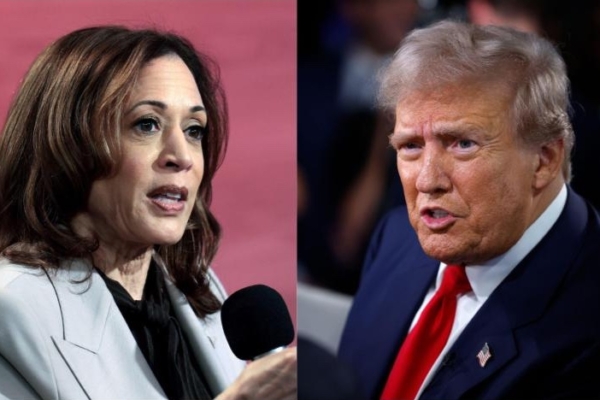The upcoming U.S. presidential election on November 5 has drawn significant attention to the swing states, with the state of the electorate in focus. As the election approaches, a study by the online real estate company Redfin has revealed changes in the party affiliation structure of two key battleground states.
Arizona and Nevada, both swing states and neighboring the traditionally “blue” state of California, have seen significant population outflows from California in recent years. According to U.S. Census data, California lost 341,866 residents in just 2022, with 74,157 moving to Arizona and 48,836 to Nevada. However, despite this influx, there has not been a “blue wave” in these swing states.
Instead, Redfin found that since the last presidential election, Arizona has lost over 186,000 registered Democratic voters, 2.5 times more than the lost Republican voters. Similarly, Nevada has seen a loss of 54,000 Democratic voters, while Republican voters have not decreased and even increased by nearly 800.
Following the pattern of the previous election, these changes in the voter structure directly impact the outcome of the presidential election in these states. In 2020, President Biden won Arizona by only about 10,000 votes and Nevada by around 34,000 votes.
The showdown between Democratic Vice President Kamala Harris and former Republican President Donald Trump makes Arizona and Nevada crucial battleground states once again.
It is noteworthy that despite the significant loss of Democratic voters in Arizona and Nevada, the surge in independent voters has led to a political deadlock in both states.
According to voter registration data as of April 2024, Redfin found that Arizona has seen an increase of 37,000 independent voters since the 2020 election, accounting for 35.3% of all registered voters, nearly on par with the 35.4% proportion of Republican voters.
Furthermore, Nevada has added hundreds of thousands of independent voters, far exceeding the proportions of Democratic or Republican voters. Over the past four years, due to increasing political polarization and party deadlock, many voters have chosen to distance themselves from both major parties.
According to the Pew Research Center, approximately half of independent voters lean towards the Democratic Party, while the other half lean towards the Republican Party.
Elijah de la Campa, a senior economist at Redfin, believes that the reasons for the changing voter structure are numerous: the pandemic since four years ago has led people to leave expensive areas like New York and California for more affordable places like Arizona and Nevada, where many align better with their political views.
“But more likely, many Arizonans and Nevadans feel very disappointed with their original party choice,” de la Campa said.
Since Biden announced his withdrawal from the presidential race, many had speculated that Harris’s entry could boost the Democratic voter registration in Arizona and Nevada. However, as of the end of July, the anticipated scenario had not materialized.
Data shows that while both swing states had added around 3,000 registered Democratic voters from April to July, more Republican and independent voters had registered.
Redfin’s research also revealed that the decline in Democratic voter registration rates in Arizona and Nevada is also related to the overall declining Democratic voter registration rate nationwide.
A report by real estate listing website Realtor.com suggests that the housing and migration trends among Americans may shift the political landscape, potentially turning blue states red. California, in particular, is seen as gradually turning red.
The latest study from the Public Policy Institute of California (PPIC) also confirms this trend: compared to the 2022 election, Republican voter registration has increased in California, while Democratic and non-partisan (or independent) registrations have declined.
Among the growing demographics, Latinx voters have shown the highest proportion of shifting towards the Republican Party, while African American voters have also turned to the GOP and some smaller parties.
With the presidential election looming, Harris and Trump are both campaigning vigorously, hoping to secure more votes in the final stretch.

